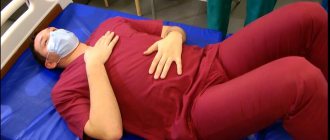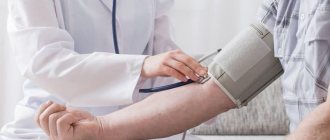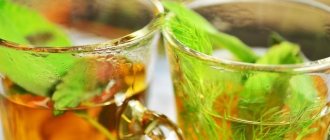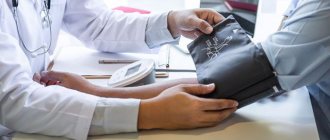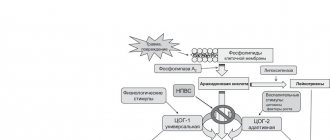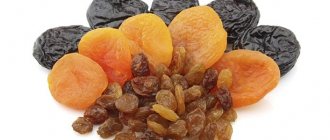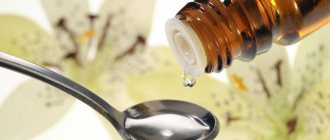Normal blood pressure: what is upper and lower pressure
Blood pressure is measured using a device called a tonometer. A cuff (a wide band that compresses) is placed on the arm. This cuff is attached to a device that measures the pressure inside your arteries. When you turn on the blood pressure monitor, the cuff tightens and then slowly relaxes again. It's quick and painless. Eventually, the device will show your blood pressure.
Blood pressure is measured in millimeters of mercury. The blood pressure reading consists of two numbers, for example 120/75. The first (top) number is the pressure when the heart beats (systolic pressure). The second (lower) number is when the heart relaxes (diastolic pressure).
High blood pressure usually does not cause symptoms. The only way to know if your blood pressure is elevated is to measure it. For example, a value of 110/70 is within the normal range for blood pressure; 126/72 – high blood pressure; value 135/85 – stage 1 hypertension (mild), etc. (see table).
Irkutsk City Clinical Hospital No. 9
Facts about hypertension:
According to the results of epidemiological studies in our country, about 30 million people (25 - 30% of the population) suffer from arterial hypertension.
- People with high blood pressure are 3-4 times more likely to develop coronary heart disease and 7 times more likely to develop cerebrovascular accidents. In 68 out of 100 cases of myocardial infarction and in 75 out of 100 cases of stroke, patients had long-term elevated blood pressure.
- It has been proven that lowering blood pressure
- even by 3 mmHg. can reduce mortality from stroke by 8%, from coronary heart disease - by 3%.
Arterial hypertension to persistently elevated blood pressure (BP). This is one of the most common diseases.
The only way to know that you have arterial hypertension is to measure your blood pressure!
A level below 130/85 mmHg is accepted as normal blood pressure. Blood pressure between 130/85 and 139/89 is considered elevated and normal.
The diagnosis of arterial hypertension is made when blood pressure is detected above 140/90 mmHg. at least twice during repeated visits to the doctor.
Today there are three degrees of hypertension
| Degrees AG | Systolic blood pressure | Diastolic blood pressure |
| 1 | 140-159 | 90-99 |
| 2 | 160-179 | 100-109 |
| 3 | more than 180 | More than 110 |
There are no symptoms specific to arterial hypertension, but you may suspect this disease if you have:
| If these signs are present |
- attacks of “lightness”;
- dizziness;
- weakness;
- headaches, pain in the heart area;
| Measure blood pressure regularly 3-4 times a day and when symptoms appear and record the results in a diary. |
- noise in ears;
- deterioration of performance and memory;
- flashing “spots” before the eyes, double vision;
- difficulty speaking;
- numbness of the limbs;
- shortness of breath caused by exercise;
- swelling of the legs;
- visual impairment.
Regardless of whether your blood pressure is normal or elevated, be sure to check whether you have risk factors for hypertension and try to reduce their impact on your health:
| Risk factors | Results after risk factor adjustment |
| Excess body weight | A decrease in body weight by 10 kg leads to a decrease in blood pressure by at least 10 mmHg. |
| Physical inactivity | It has been established that regular physical training reduces systolic and diastolic blood pressure by 5-10 mmHg. |
| Chronic stress | With reduced exposure and elimination of stress factors, as well as rest, blood pressure decreases spontaneously. |
| Smoking | Quitting smoking helps reduce blood pressure, cholesterol, fibrinogen in the blood and platelet aggregation activity. |
| Alcohol | Reducing the frequency and dose of a single alcohol intake to 20-30 g of pure ethanol per day for men (200-250 ml of dry wine, 500-600 ml of beer) and 10-20 g for women will avoid the development of hypertension in 11% of men and in 1% of women and reduce the risk of stroke in patients with hypertension by 3-4 times. |
| Excess salt intake | Reducing the consumption of table salt to 4.5 g per day contributes to a significant reduction in blood pressure. |
| Poor nutrition | It has been established that a decrease in systolic and diastolic blood pressure in the population while following the DASH diet leads to a reduction in the incidence of coronary pathology by 15% and strokes by 27%. |
| Coffee | You should not overuse coffee, as drinking 2-3 cups of coffee can increase systolic blood pressure by 3-14 mmHg, and diastolic blood pressure by 4-13 mmHg. |
| You need to measure blood pressure: -at least 2 times a year, if the last time diastolic blood pressure was <85, systolic blood pressure <140 mmHg. -weekly, if the last time diastolic blood pressure was 85-89 mmHg. -daily if systolic blood pressure was >140 and diastolic blood pressure >89 mmHg, especially in the early morning hours from waking up to noon. |
| How to measure blood pressure correctly: 1) one hour before measuring blood pressure, you should not drink coffee or tea, and half an hour before you should not smoke; 2) blood pressure is measured at rest after a 5-minute rest; 3) the hand should be at the level of the heart; 4) clothing should not squeeze the hand; 5) the cuff is placed on the shoulder, its lower edge should be 2 cm above the elbow, the phonendoscope is installed on the brachial artery; 6) pump air into the cuff until the pulsation stops and add another 30 mmHg, then release the air at a speed of approximately 2-3 mmHg. in 1 second; 7) the appearance of pulsation will indicate the figures of systolic blood pressure, the cessation will indicate diastolic blood pressure.
9) if the shoulder circumference is more than 33 cm, it is necessary to use a wider cuff, otherwise the blood pressure numbers will be overestimated. |
Dietary recommendations for prevention and control
Diet for hypertension (DASH)
| Product groups | Number of servings per day | Portion volume | Product names | Practical significance |
| Grain and grain products | 7-8 | 1 slice of bread, 80g dry ground grain, 120ml boiled rice, oatmeal, corn flakes, etc. | Wheat bread, pita, oatmeal, rolled oats | Main source of energy and fiber |
| Vegetables | 4-5 | 160g raw leafy vegetables, 160g cooked vegetables, 180ml vegetable juice | Tomatoes, potatoes, carrots, peas, pumpkin, broccoli, turnips, cabbage, spinach, Jerusalem artichoke, beans | Foods fortified with potassium, magnesium and fiber |
| Fruits | 4-5 | 180ml fruit juice 40g dried fruit 80g fresh, frozen or canned fruit 1 medium sized fruit | Apricots, bananas, dates, grapes, oranges, orange juice, mangoes, melons, watermelons, peaches, pineapples, plums, raisins, strawberries, tangerines | Important sources of potassium, magnesium and fiber |
| Dairy | 2-3 | 240ml milk, 120ml yogurt, 45g cheese | Skim or 1% milk, skim or reduced fat butter, yogurt, cheese | Greatest sources of calcium and proteins |
| Meat, poultry, fish | no more than 2 | 84g cooked meat, poultry or fish | Choose only lean meats, remove visible fat, bake and poach meats instead of frying; remove the skin from the bird | Foods fortified with protein and magnesium |
| Nuts, seeds, beans | 4-5 per week | 42g nuts, 14g seeds, 80g cooked beans | Almonds, hazelnuts, peanuts, walnuts, beans, lentils | Rich sources of energy, magnesium, potassium and fiber |
The diet is based on eating approximately 2,000 calories per day.
Diet . It is advisable to eat food at least 4-5 times a day, distributing it according to the calorie content of the daily diet approximately as follows: breakfast before work - 30%, second breakfast - 20%, lunch - 40%. dinner - 10%. The last meal should be at least 2-3 hours before bedtime.
| YOUR ENEMIES | YOUR FRIENDS |
| Refined foods such as white bread, rice, pasta. | Cereal derivatives - bran bread, black rice, bran, oat flakes, wheat germ, muesli, barley, buckwheat. |
| Snack food - potato and cheese chips, buttered popcorn. | Nuts, almonds, fruits: apricots, bananas, oranges, grapefruit, pears, puffed popcorn. |
| Roasted vegetables, seafood, poultry. | Baked, steamed vegetables, seafood, poultry. |
| Vegetables in rich sauce, oil. | Vegetables with low-fat sauce, seafood with herbs and low-fat or low-fat cheese. |
| Milk, cheese and whole milk ice cream | Reduced fat milk, yogurt. |
| Large portions of fatty meat, sausages, sausages. | Medium portions of lean meat, meat with vegetables. |
| Pasta with cream and cheese sauce. | Pasta with tomato sauce, olive oil. |
| Pizza with fatty cheese, meat, sausage. | Pizza with vegetables, mushrooms, spinach. |
| Hamburgers, cheeseburgers, fried chicken. | Grilled chicken, baked potatoes. |
| Salads with cream sauce. | Salads with olive and corn oil. |
| Coffee, tea, lemonade, Pepsi-Cola, Coca-Cola. | Vegetable and fruit juices, nectars. |
Physical activity for the prevention of arterial hypertension
Aerobic exercise is indicated because:
- large muscle groups take part in them;
- can be carried out for a long time;
- walking, jogging, swimming, tennis, cycling, rhythmic gymnastics contribute to more intense absorption of oxygen by the body and are beneficial for the heart and blood vessels.
Aerobic physical activity ensures maximum oxygen delivery to organs and tissues, so they must be performed at a certain heart rate, which is calculated individually for each person.
| The easiest way to calculate your training heart rate: Maximum heart rate (HR) = 220 - age (years). The training heart rate should be 50% (lower limit) - 75% (upper limit) of the individual maximum heart rate. This formula is valid for relatively “healthy” people. |
- physical activity should be performed at least 4 days a week;
- The duration of physical activity should be 30-45 minutes per day.
| Anaerobic exercises (weightlifting, bodybuilding, which provide high physical activity for a short time) — for high blood pressure CONTRAINDICATED! |
In case of a sharp increase in blood pressure (hypertensive crisis), it is necessary:
- calm down and ensure a comfortable position;
- unfasten the buttons of your outerwear and open the window;
- restore breathing: take a deep breath, hold your breath and exhale slowly, repeat this several times;
- put mustard plasters on calves;
| A drug | Initial dose | Repeat dose | Tactics |
| CLOPHELINE | 0.15 mg (1 tablet) | 0.075 mg | If after 20-30 minutes the pressure does not decrease by 25% of the initial figures, then you need to take the medicine again. If 20-30 minutes after taking the pills again, the pressure has not decreased, CALL A DOCTOR. |
| CAPOTEN | 25 mg (1 tablet) | 25 mg | |
| ATENOLOL | 50 mg (1 tablet) | 50 mg | |
| NIFEDIPINE | 20 mg (1 tablet) | 20 mg | |
| NITROGLYCERINE | 0.5 mg (1 tablet) | — | |
| FUROSEMIDE | 40 mg (1 tablet) | — |
- take the tablet under the tongue (chew or dissolve), taking one of the following medicines from the first aid kit:
| Shiatsu massage techniques are also used to reduce blood pressure. In this case, a soothing method of influencing massage points is used, i.e. continuous, smooth pressure with a gradual increase in pressure over 3-5 minutes. The massage points are shown in the figure. |
Share
What causes high blood pressure
For most people, there is no single cause for high blood pressure. However, there are a number of factors that increase the likelihood of developing hypertension. These are the so-called risk factors - controllable and uncontrollable. You can adjust:
- . When a person smokes, the incoming nicotine increases blood pressure. Over time, this damages the arteries, increasing the risk of heart attack or stroke.
- Eating excess processed foods and salt. Many processed foods contain a lot of salt. Excess salt intake causes the body to store excess water, which increases blood pressure.
- Drinking excess alcohol too often. Drinking alcohol temporarily increases blood pressure. Excessive alcohol consumption on a regular basis can lead to hypertension.
- Excess weight. Excess weight increases the risk of high blood pressure. Even losing just a few pounds can lower your blood pressure.
- Insufficient activity. If a person moves more and sits less, blood pressure decreases.
- . Hormones produced by the body during stress increase blood pressure. Researchers are still trying to understand the exact link between long-term high blood pressure and ongoing stress.
Uncontrollable risk factors include:
- . If a patient has type 1 or type 2 diabetes, they are twice as likely to develop high blood pressure.
- Kidney disease or other gland problems. Sometimes a serious disease that affects the kidneys, arteries, heart, or endocrine system can cause high blood pressure.
- Aging. Blood pressure naturally increases with age.
- Taking certain medications, such as birth control pills.
- A parent or sibling with high blood pressure. High blood pressure runs in families, so if parents or siblings have problems, the risk of hypertension increases.
Dr. Strelnikova’s complex against hypertension
Doctor Strelnikova, whose methods have long been used by modern cardiologists, also recommended lowering blood pressure with exercises. To achieve tangible results, you need to do gymnastics regularly every day. The course is 2 months.
The basis of the technique is correct breathing.
- Palms. Stand up, fold your arms so that your palms are at shoulder level. Turn your palms forward. Take a powerful breath through your nose, while clench your fists. Exhale and loosen your hands again.
- Shoulder straps. Bend your arms so that your fists are at shoulder level. Inhale loudly, lowering and straightening your arms. Exhale, and enter the I.P.
- Horse. IP - any comfortable position in which the back remains level. Relax, take 4 deep breaths through your nose without interruption. Hold your breath for a couple of seconds and slowly return to the starting position.
- Pump. Place the legs at shoulder level. Bend over so that your back is slightly rounded. Inhale the air forcefully, straighten up, and only then exhale.
- The cat exercise is performed while standing. Bend your elbows and place your palms behind you at lower back level. Take a deep breath and turn to one side. Turn back and exhale calmly. Repeat everything from the beginning, but for the other side. At the same time, breathe noisily and deeply.
- Pendulum. Inhale and bend forward. As you exhale, straighten up and hug yourself with your arms. Turn your neck first in one direction and then in the other. Inhale during the turn, exhale during the starting position.
- Ears. Tilt your head towards one of your shoulders. While bending over, take a deep, powerful breath. Exhale while straightening your neck.
- Pendulum head. Inhale, while tilting your head forward, and as you exhale, return to the i.p.
Interesting! When performing exercises to normalize pressure according to the Strelnikova system, you should pay special attention to proper breathing. Inhalation is done through the nose and exhalation through the mouth. All actions should be performed about 6-8 times. With adaptation to loads, you can increase the number of repetitions. If your health deteriorates, it is better to temporarily interrupt exercise therapy.
Material on the topic: What exercises can you do after a heart attack.
Symptoms of high blood pressure
High blood pressure is often called the "silent killer" because in most cases it causes no symptoms. The only way to find out if it is there is to measure it with a tonometer. High blood pressure can sometimes be accompanied by one or more of the following symptoms:
- Strong headache;
- dyspnea;
- dizziness;
- nosebleeds;
- severe anxiety.
Usually the headache is in the back of the head; during crises, one often feels dizzy and is accompanied by nausea and vomiting.
13. Eating foods rich in calcium
People with low calcium intake often have high blood pressure.
For them, foods that lower blood pressure are foods rich in calcium. Calcium supplements do not provide much benefit. But a diet containing large amounts of calcium helps normalize blood pressure.
For an adult, the daily intake of calcium in the body is 1000 mg. For women over 50 and for men after 70, the norm should be increased to 1200 mg per day.
Calcium is found not only in dairy products, but also in kale and other leafy greens, legumes, sardines and bean curd.
Bottom line. A diet high in calcium helps normalize blood pressure. Eat more dairy products, leafy greens and bean curd.
What to do with high blood pressure
There are two types of hypertensive crises - both require immediate attention, as they threaten serious complications. It is important to know what to do if you have high blood pressure at home, and how to provide first aid.
If your blood pressure is 180/120 or higher, wait about five minutes and try again. If the second reading is as high and you do not experience any other associated end-organ symptoms such as chest pain, shortness of breath, back pain, numbness or weakness, vision changes or difficulty speaking, it will be considered an uncomplicated hypertensive crisis . Your doctor may simply adjust or add medications, but the condition rarely requires hospitalization.
If your blood pressure is 180/120 or higher, a high pulse with high blood pressure, you are experiencing any other symptoms of end organ damage such as chest pain, shortness of breath, back pain, numbness/weakness, vision changes, or difficulty with a speech, it is important to know what to do. This is a complicated crisis. Don't wait for your blood pressure to drop on its own; call an ambulance.
Physical therapy to lower blood pressure using the Shishonin method
Dr. Shishonin’s exercises for hypertension will help you get rid of high blood pressure, headaches, migraines, sleep problems and other unpleasant manifestations of the disease through the effect on the cervical spine.
Here are the following exercises to reduce blood pressure:
- Metronome. Sit on a chair, tilt your head left and right, holding each side for 30 seconds.
- Spring. Tilt your head as far down as possible so that your chin touches your chest. Freeze for 30 seconds. Then stretch your neck forward and freeze again. Move your head to the side, and again do not move for 30 seconds. Go back to the beginning. Perform 4-5 turns on each side.
- Fakir. Place your palms behind your neck. Bend your elbows as tight as you can. Turn your head from left to right, freezing in each direction for half a minute.
- Heron. IP - sitting. Place your palms on your knees. Stretch your chin up while looking at the ceiling. At the same time, move your arms back. Hold for 5 seconds. Bring your chin down and your arms forward. Rest and do it all again.
- Goose. IP - standing. Position your head so that your chin is parallel to the floor. Pull your neck forward until you feel pain. Stop for 2-3 seconds and return to the starting position. Rest and repeat everything from the beginning again.
These 5 exercises for hypertension will normalize blood pressure, relieve headaches, and help increase strength and energy. Dr. Shishonin recommends performing neck exercises for hypertension efficiently and slowly, so as not to provoke an exacerbation of hypertension.
Video: Dr. Shishonin's exercises
High blood pressure danger
A hypertensive crisis (high blood pressure or BP) is a condition when blood pressure rises quickly and sharply, with readings of 180/120 or higher. The consequences of uncontrolled blood pressure in this range can be serious and include:
- stroke;
- loss of consciousness with dangerous injuries;
- memory loss;
- acute cardiovascular diseases;
- eye damage and visual disturbances;
- loss of kidney function;
- aortic dissection;
- angina pectoris (unstable chest pain);
- Pulmonary edema (fluid reserve in the lungs).
If you have been diagnosed with high blood pressure, monitor your readings and take your medications. During an emergency, having the notes with you can provide valuable information to the medical team providing treatment.
Home diagnosis of the condition
Before giving a person pills or using home remedies, the blood pressure must be measured. For these purposes, a semi-automatic or automatic tonometer is best suited, which should be in the first aid kit of every hypertensive or hypotensive patient, including potential ones.
To assess the condition, it is important to take into account all indicators of the device - systolic and diastolic pressure, pulse rate. The optimal blood pressure values are considered to be 120 to 80 mm Hg. Art. However, they are averages and may vary depending on age, level of physical activity, gender, the presence of concomitant diseases and even the foods consumed.
Table of blood pressure norms by age
If the tonometer readings differ from the optimal values by more than 15 mm Hg. Art., a person feels unwell, then it is worth quickly taking measures to provide him with first aid. This also applies to situations where only cardiac (upper) or only renal (lower) pressure is increased. In the case when the difference between the systolic and diastolic indicators is different from normal - about 40 mm Hg. Art., you must inform your doctor about this, since such a symptom may indicate serious problems in the functioning of the heart or kidneys.
If high blood pressure bothers you several times a month, this is a reason to undergo an examination to identify the cause of the condition and create a treatment plan. At the initial stage of primary hypertension, the problem can be solved without the help of medications. The emphasis is on salt-free nutrition, physical activity, and psycho-emotional relaxation.
Secondary hypertension occurs as a symptom of diseases of the cardiovascular system, endocrine, and urinary systems. It is possible to cope with fluctuations in blood pressure after a comprehensive diagnosis only if the underlying disease is treated at the same time.
No ads 1
 to obtain accurate data on blood pressure levels, at least two measurements should be performed;
to obtain accurate data on blood pressure levels, at least two measurements should be performed;